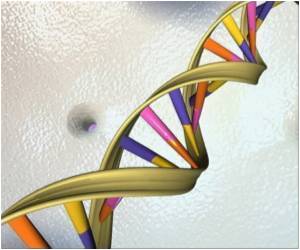Changing amounts of a certian protein in the brains of mammals affected their learning and menmory profoundly, revealed a recent study.

"There are populations of humans who are slightly smarter and have better memory recall than others, and these traits have been mapped to the gene that codes for the kibra protein" says Richard L. Huganir, Ph.D., professor and director of the Solomon H. Snyder Department of Neuroscience at the Johns Hopkins University School of Medicine, and a Howard Hughes Medical Institute investigator. "Our studies in mice show that this same gene is involved in the operation of synapses, through which neurons communicate, and in brain plasticity, suggesting that's what its role might be in humans too."
In their lab, Huganir and neuroscience graduate student Lauren Makuch isolated kibra from mouse brain cells and confirmed by standard biochemical tests that it interacted with a neurotransmitter receptor in the brain known as the AMPA receptor.
They then determined that kibra regulated the delivery of AMPA receptors from inside the brain's nerve cells out to the synapses by first growing live brain cells from embryonic mice in a dish for two weeks and then genetically altering some of those cells to produce less kibra protein. Next, they placed the live neurons in an imaging chamber and recorded the activity of the AMPA receptors once a minute for 60 minutes. Results showed that AMPA receptors moved faster in the cells with less kibra than in control cells with normal amounts of the protein demonstrating that kibra regulates how receptors are delivered to the surface of brain cells.
The work affirms that the addition of AMPA receptors to synapses serves to strengthen connections in the brain, Huganir says, noting that most forms of learning involve the strengthening of some synapses and the weakening of others, a phenomenon known as plasticity, which is responsible for sculpting circuits in the brain that encode memory. Without kibra, this process doesn't function properly; as a result, learning and memory are compromised. Huganir hypothesizes that kibra specifically helps create a pool of receptors that is used to add receptors to synapses during learning.
Later in their study, using slices of brain from mice with or without kibra, postdoctoral fellow Lenora Volk recorded and measured electrical activity and synaptic plasticity in nerve cells, noting that mice lacking kibra showed less plasticity, a phenomenon that translates into a reduced ability to learn and recall new information, Makuch explains.
Advertisement
"Our work in the mammalian brain shows that kibra, required for normal brain function and associated with learning and memory, is important for regulating the trafficking of AMPA receptors," Huganir says. "In addition, as kibra has been associated with protection against early onset Alzheimer's disease, these studies may help define novel therapeutic targets for the treatment of age-related memory disorders."
Advertisement
Source-Eurekalert









